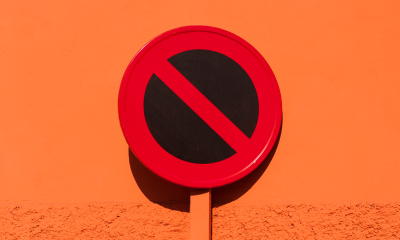Technology
These people aren’t real. Can you tell?

The image above looks like a collage of photographs, but in fact, it’s been generated by an artificial intelligence. And as real as they may look, the people in the image aren’t actual humans.
In a new paper (via The Verge), a group of Nvidia’s researchers explain how they’ve created these images by employing a type of AI, called generative adversarial network (GAN), in novel ways. And their results are truly mind-boggling.
The paper is titled “A Style-Based Generator Architecture for Generative Adversarial Networks” and signed by Tero Karras, Samuli Laine and Timo Aila, all from Nvidia. In it, the researchers show how they’ve redesigned the GAN’s architecture with a new approach called “style-based design.”
“Our generator thinks of an image as a collection of “styles.”
“The new architecture leads to an automatically learned, unsupervised separation of high-level attributes (e.g., pose and identity when trained on human faces) and stochastic variation in the generated images (e.g., freckles, hair),” the paper says.
In layman’s terms, after being trained, the GAN produced images that are pretty much indistinguishable from photographs of real people, completely on its own.
“Our generator thinks of an image as a collection of “styles,” where each style controls the effects at a particular scale,” the researchers explain in a video accompanying the paper. These styles are attributes such as pose, hair, face shape, eyes and facial features. And researchers can play with these styles and get different results, as seen in the video, below.
It’s not just people that GAN can create in this way.
In the paper, the researchers use the GAN to create images of bedrooms, cars and cats.

Amazingly, the concept of GANs was introduced just four years ago by researchers from the University of Montreal.
Check the image from that paper below to see how much progress has been made since then.

Image: Universite de Montr EAL/arxiv.org
It’s easy to see this technology used in the creation of realistic-looking images for marketing or advertising purposes, for example. But it’s just as easy to imagine someone using it to create fake “evidence” of events that never happened in order to promote some agenda.
At the speed this tech is progressing, it soon might be impossible to tell whether you’re looking at a real photograph or a computer generated image.

!function(f,b,e,v,n,t,s){if(f.fbq)return;n=f.fbq=function(){n.callMethod?
n.callMethod.apply(n,arguments):n.queue.push(arguments)};if(!f._fbq)f._fbq=n;
n.push=n;n.loaded=!0;n.version=’2.0′;n.queue=[];t=b.createElement(e);t.async=!0;
t.src=v;s=b.getElementsByTagName(e)[0];s.parentNode.insertBefore(t,s)}(window,
document,’script’,’https://connect.facebook.net/en_US/fbevents.js’);
fbq(‘init’, ‘1453039084979896’);
if (window._geo == ‘GB’) {
fbq(‘init’, ‘322220058389212’);
}
if (window.mashKit) {
mashKit.gdpr.trackerFactory(function() {
fbq(‘track’, “PageView”);
}).render();
}
-

 Business7 days ago
Business7 days agoFormer top SpaceX exec Tom Ochinero sets up new VC firm, filings reveal
-

 Business6 days ago
Business6 days agoConsumer Financial Protection Bureau fines BloomTech for false claims
-

 Business4 days ago
Business4 days agoLangdock raises $3M with General Catalyst to help businesses avoid vendor lock-in with LLMs
-

 Entertainment4 days ago
Entertainment4 days agoWhat Robert Durst did: Everything to know ahead of ‘The Jinx: Part 2’
-

 Business6 days ago
Business6 days agoKlarna credit card launches in the US as Swedish fintech grows its market presence
-

 Entertainment3 days ago
Entertainment3 days agoThis nova is on the verge of exploding. You could see it any day now.
-

 Entertainment7 days ago
Entertainment7 days agoHow to watch ‘The Sympathizer’: Release date and streaming deals
-

 Entertainment6 days ago
Entertainment6 days agoHow to set boundaries in the early stages of dating






















